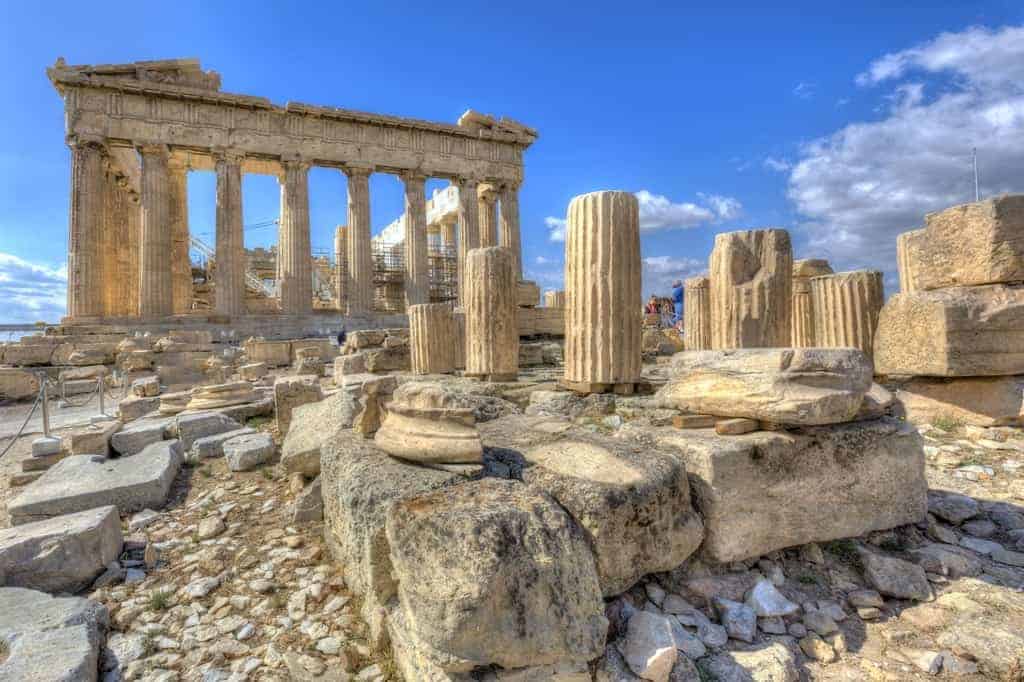Among the many forms of art that ancient Greece has brought forth to the world, architecture stands among the greatest. Ancient Greek architecture was the first to introduce standard rules that deeply influenced Roman architecture, and through it, architecture to this day.
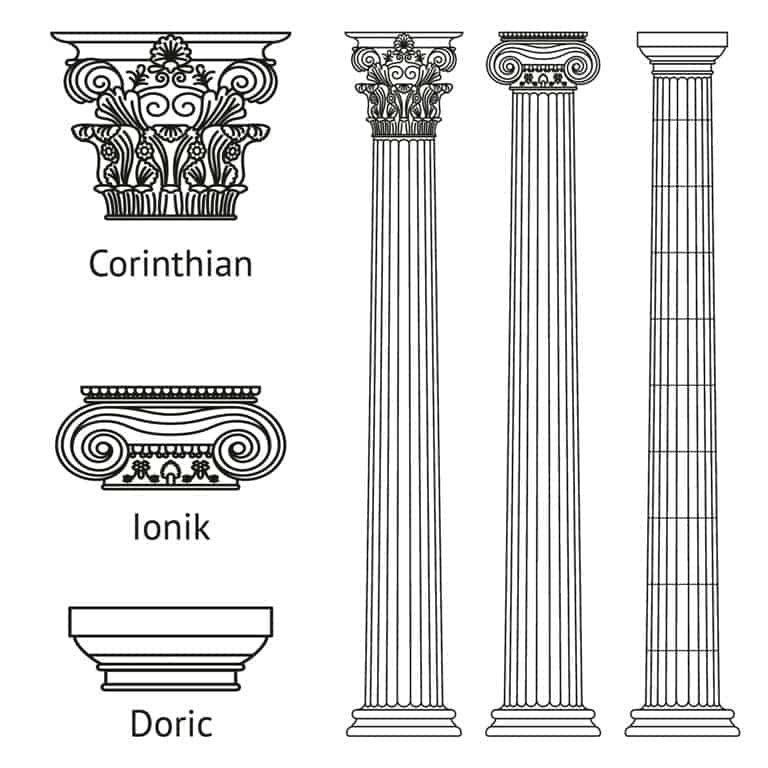
During its early rise in the Classical period, ancient Greek architecture developed into three distinct orders: the Doric, the Ionic, and the Corinthian. Each of these orders was characterized by distinct features in their columns, which were a staple for formal, public buildings such as stadiums and theaters.
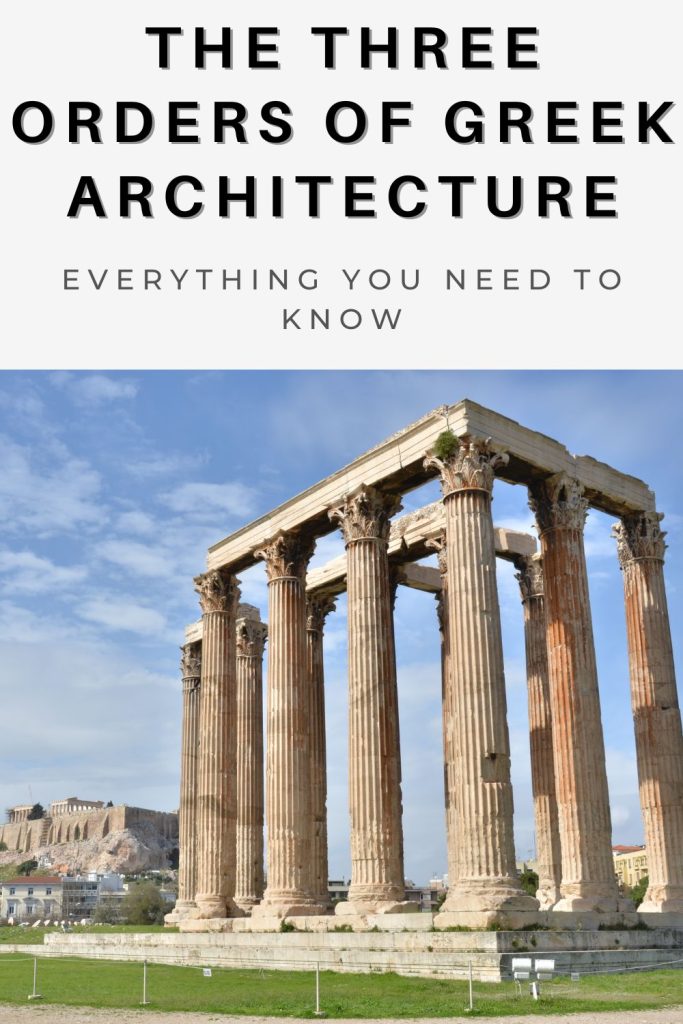
The 3 Types of Greek Columns
The Doric Order
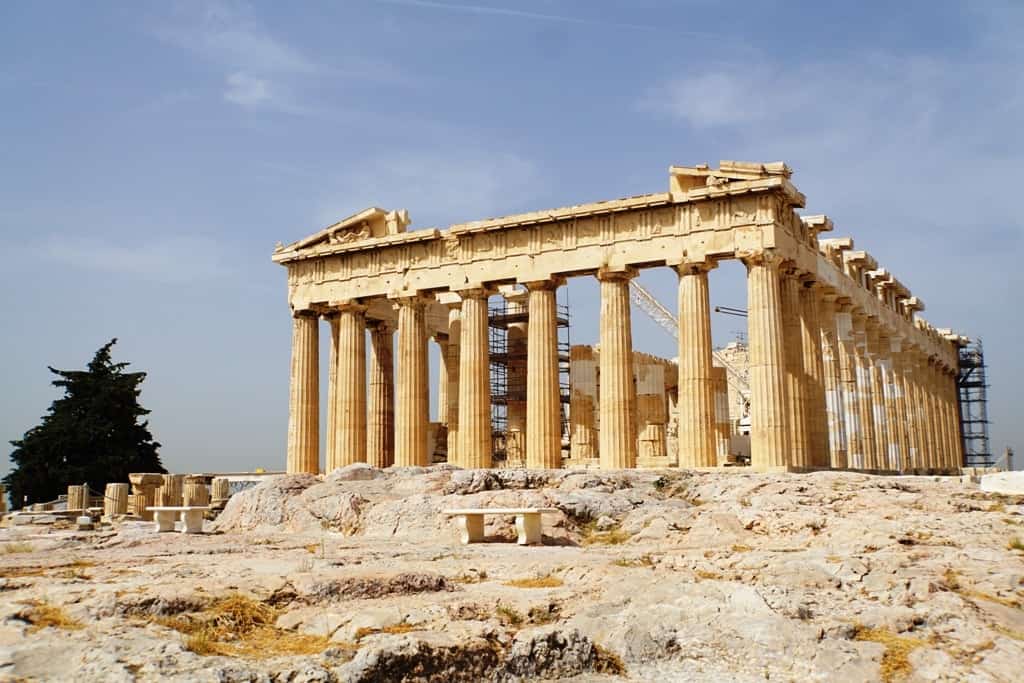
Of the three orders, the Doric one stands as the earliest order of classical architecture, and at the same time, it represents a crucial turning point in Mediterranean architecture since it was at this moment that monumental construction made the transition from impermanent materials such as wood- to permanent ones, namely stone.
This order made its appearance towards the beginning of the 7th century BCE, making it the oldest order, the simplest, and most massive. It emerged in the Greek mainland and remained the predominant order for the construction of Greek temples until the early 5th century BCE, although great buildings especially the canonical Parthenon in Athens-still made use of it.
Doric columns were stouter and thicker, but also more simple and plain, in comparison with the Ionic and the Corinthian ones, with smoother and rounder capitals. They come without an individual base and they are placed directly on the stylobate. However, later forms of the Doric columns came with a standard base which consisted of a plinth and a torus.
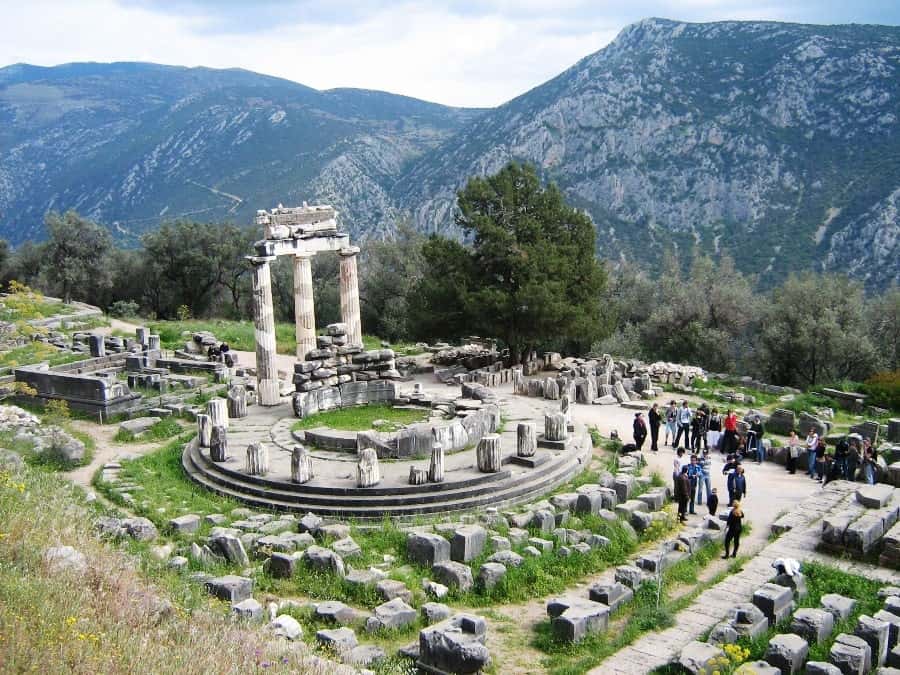
Furthermore, the columns were typically placed close together, with concave curves sculpted into the shafts. The capitals appear rather plain with a rounded section at the bottom (the echinos) and a square at the top (the abacas). The freeze of the Doric entablature is divided into triglyphs (a unit consisting of three vertical bands that are separated by grooves) and metopes (the reliefs between two triglyphs).
Early examples of the order are considered the sanctuary of Hera at Argos, as well as the early Doric capitals that were a part of the Temple of Athena Pronaia at Delphi in central Greece. The Doric order, nevertheless, finds its fullest and highest expression in the Parthenon, built in Athens between 447 and 432 BCE, and designed by Iktinos and Kallikrates.
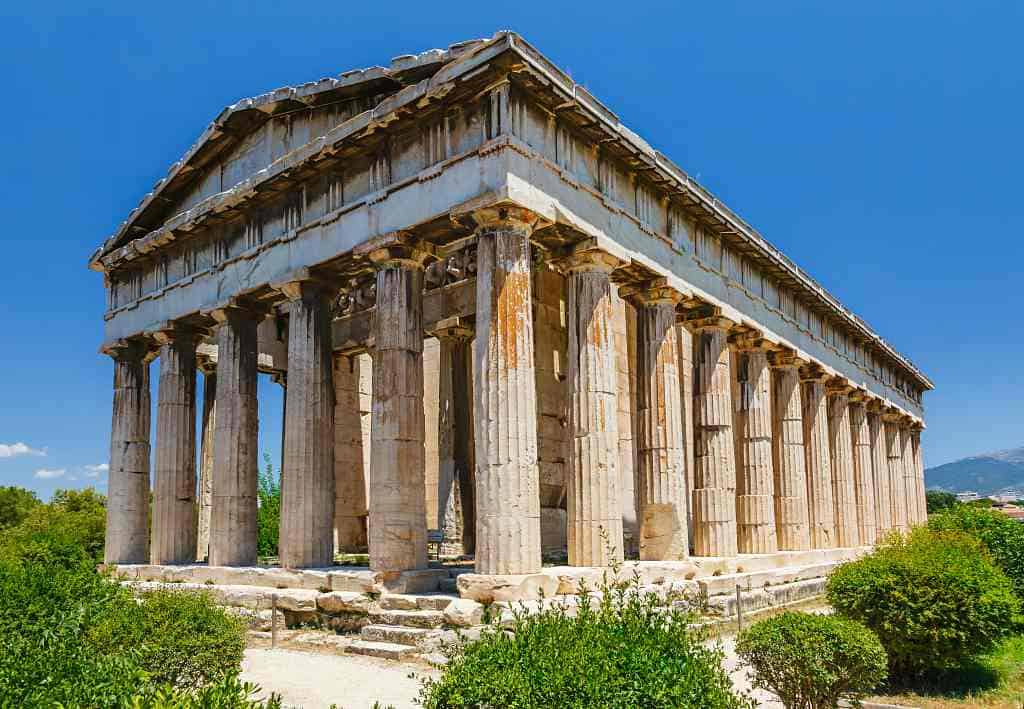
Built in honor of the goddess Athena, the Parthenon is known as a peripteral Doric temple, since the columns are located on the periphery of the temple. Another notable example of the Doric order is considered the temple of Hephaestus in Athens, built almost entirely of marble during the years 479 to 415 BCE.
The Ionian order
The Ionian order originated during the mid-6th century in Ionia, which was a coastal region of central Anatolia, where the Greeks migrated during the 11th century BCE. The Ionian capital is characterized by two opposed volutes (also called ‘’scrolls’’) in its echinus, and by thin, fluted pillars with a large base.
The echinus is decorated with an egg-and-dart motif, while the Ionic shaft comes with four more flutes than the Doric one (24 in total). The base of the pillar has two curved moldings called tori, separated by a scotia.
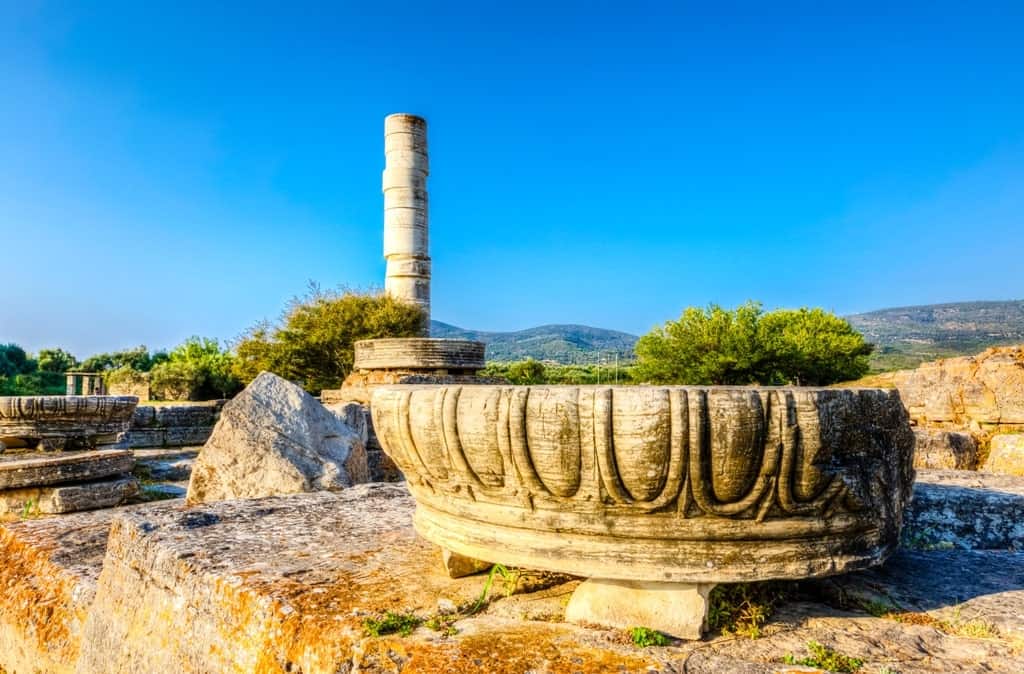
This order is furthermore marked by an entasis, a curved thinning in the shaft of the column. The height of the Ionic order is nine times its lower diameter, while the shaft itself is eight meters high. The architrave of the entablature most commonly consists of three stepped bands (fasciae), while on the frieze, the Doric triglyph and metope are absent. In some cases, the frieze comes with a continuous ornament such as carved figures.
The Ionic order was transmitted to the Greek mainland by the 5th century BCE. The monumental temple of Hera on the island of Samos, built between 570 and 560 BCE is considered one of the great Ionic buildings, although it was soon destroyed by an earthquake, with the Ionic columns being the only part of the temple still standing.
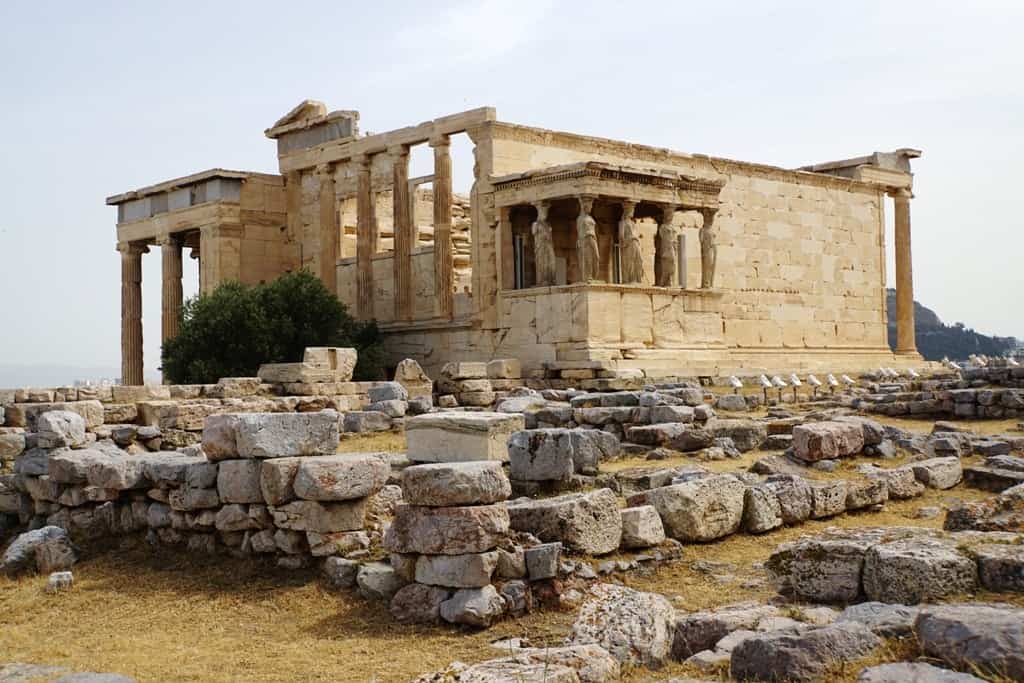
The temple of Artemis at Ephesus, once among the Seven Wonders of the World, was also an Ionic design. Also known as Artemisium, it was built by Croesus, the king of Lydia in 550 BCE, and it was infamous for its size. In Athens, the Ionic order influences some elements of the Parthenon, notably the frieze that encircles the cella of the temple, the Propylaia, and the exterior order in the construction of the Erechtheion.
The Corinthian Order
The Corinthian order is the latest of the Classical orders of architecture, but also the most elaborate in terms of style and sophistication. This order was also frequently employed by Roman architecture with some minor variations, thus giving rise to the Composite order.
The origins of the order are located in Corinth, where, as the architectural writer Vitruvius claims, the sculptor Callimachus was the first to draw a set of acanthus leaves surrounding a votive basket, in the 5th century.

The Corinthian order is considered the most elegant and sophisticated of the Greek orders. It is characterized by an ornate capital decorated with two rows of acanthus leaves and four scrolls. The Corinthian shaft has 24 flutes and the column is ten diameters high.
On the entablature, the frieze was usually decorated with sculptural reliefs. Unlike the previous two orders, this order does not originate in wooden architecture, but it had grown directly out of the Ionic order in the middle of the 5th century BCE.
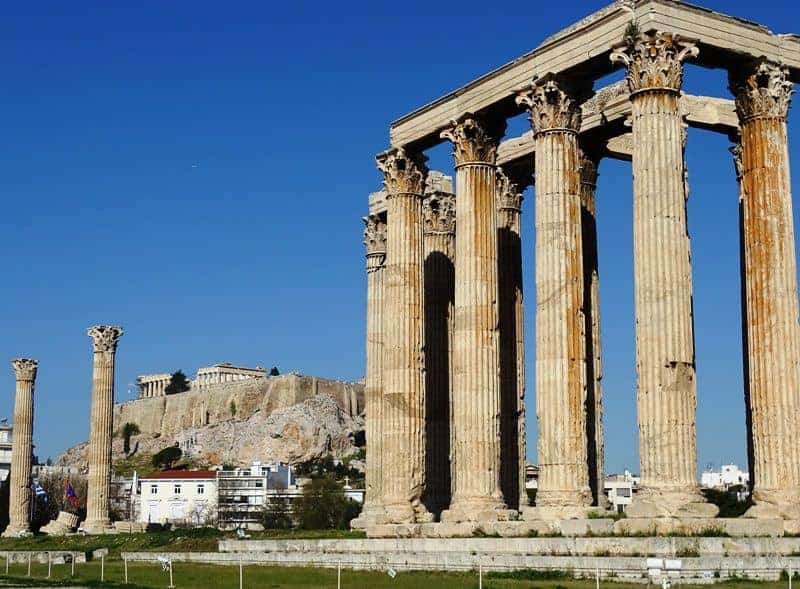
The Choragic Monument of Lysicrates in Athens, constructed from 335 to 334 BCE, is considered the oldest known building built according to the Corinthian order. Another fine example of this order is the Temple of Olympian Zeus, also known as the Olympion. Built over several centuries, it is also considered one of the largest buildings of antiquity, featuring 104 columns in total.

